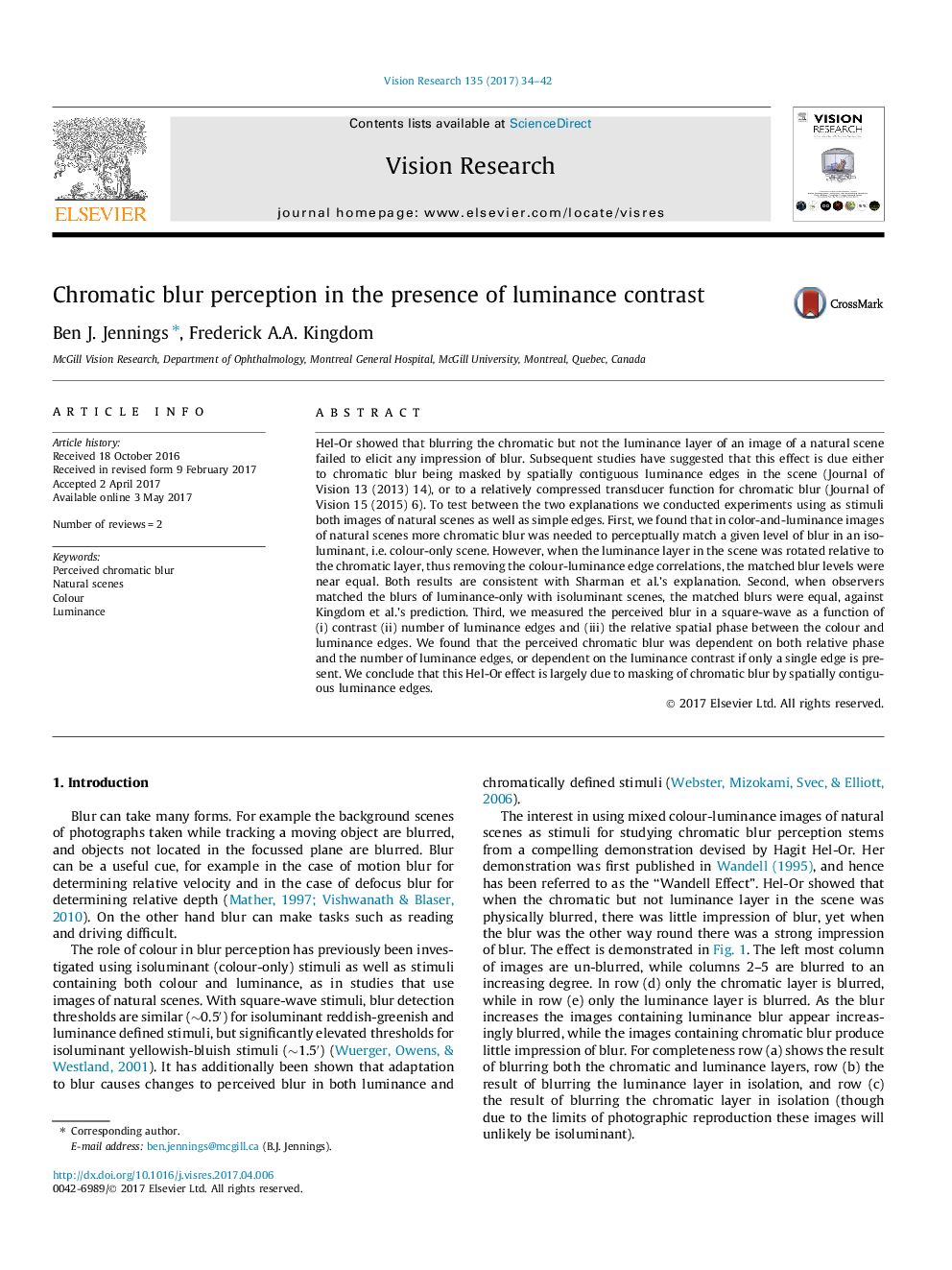| Article ID | Journal | Published Year | Pages | File Type |
|---|---|---|---|---|
| 5705908 | Vision Research | 2017 | 9 Pages |
Abstract
Hel-Or showed that blurring the chromatic but not the luminance layer of an image of a natural scene failed to elicit any impression of blur. Subsequent studies have suggested that this effect is due either to chromatic blur being masked by spatially contiguous luminance edges in the scene (Journal of Vision 13 (2013) 14), or to a relatively compressed transducer function for chromatic blur (Journal of Vision 15 (2015) 6). To test between the two explanations we conducted experiments using as stimuli both images of natural scenes as well as simple edges. First, we found that in color-and-luminance images of natural scenes more chromatic blur was needed to perceptually match a given level of blur in an isoluminant, i.e. colour-only scene. However, when the luminance layer in the scene was rotated relative to the chromatic layer, thus removing the colour-luminance edge correlations, the matched blur levels were near equal. Both results are consistent with Sharman et al.'s explanation. Second, when observers matched the blurs of luminance-only with isoluminant scenes, the matched blurs were equal, against Kingdom et al.'s prediction. Third, we measured the perceived blur in a square-wave as a function of (i) contrast (ii) number of luminance edges and (iii) the relative spatial phase between the colour and luminance edges. We found that the perceived chromatic blur was dependent on both relative phase and the number of luminance edges, or dependent on the luminance contrast if only a single edge is present. We conclude that this Hel-Or effect is largely due to masking of chromatic blur by spatially contiguous luminance edges.
Keywords
Related Topics
Life Sciences
Neuroscience
Sensory Systems
Authors
Ben J. Jennings, Frederick A.A. Kingdom,
